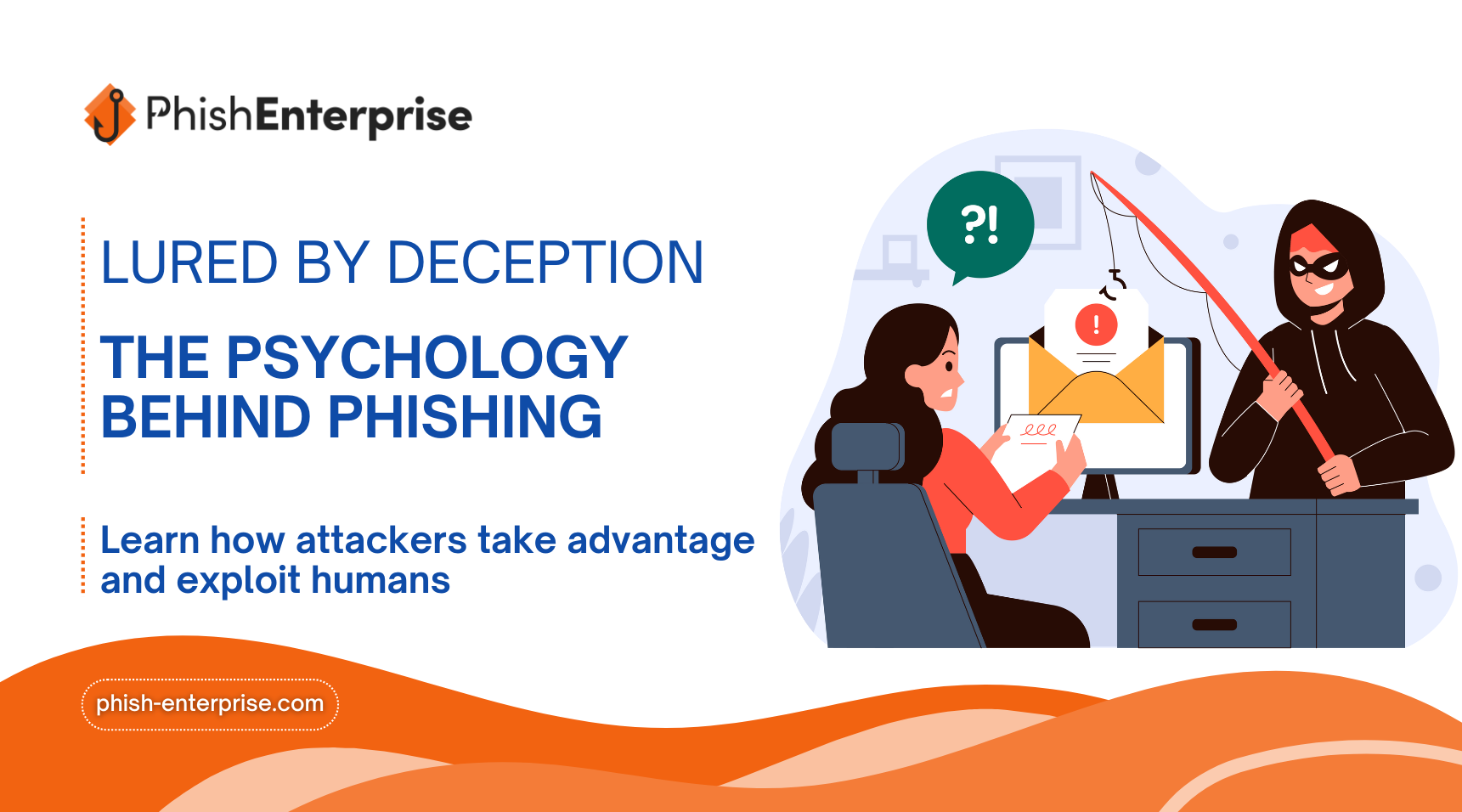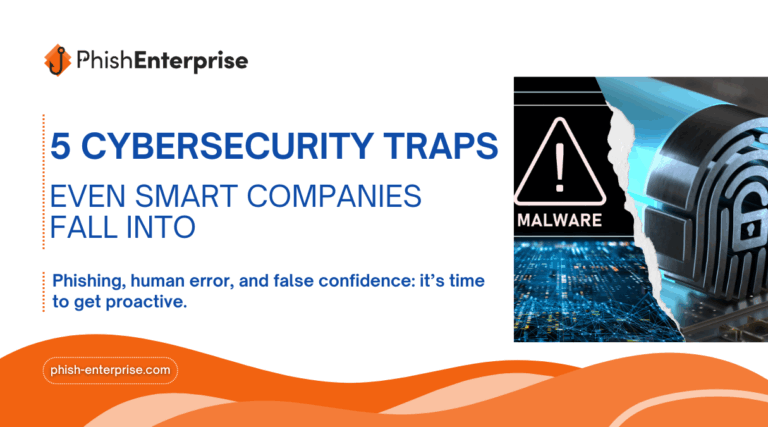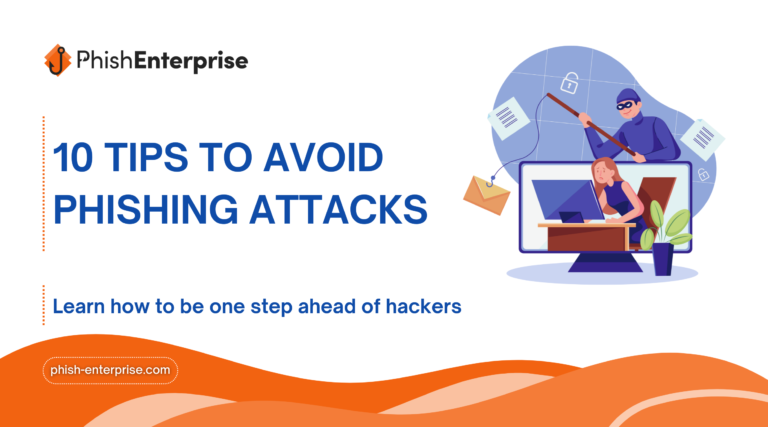Phishing scams continue to be a major threat to individuals and organizations, exploiting human psychology to steal sensitive information like passwords, financial data, and personal details. While these attacks are becoming more sophisticated, the good news is that awareness and education are improving. Effective training programs, such as Phish Enterprise, play a crucial role in helping individuals recognize and resist these deceptive tactics. Understanding the psychological triggers behind phishing is key to building stronger defenses.
This blog post explores why phishing works – why do we click the link!? – and how awareness training can empower users to stay one step ahead of cybercriminals.
Phishing in numbers
There is no secret that phishing emails are evolving in complexity, often bypassing traditional security measures. Cybercriminals exploit human cognitive biases, using a range of deceptive tactics to trick individuals into clicking malicious links – one of the leading causes of cyberattacks. A single misstep, whether due to lack of training or a moment of distraction, can compromise an entire organization.
According to Verizon, phishing and pretexting via email continue to be the leading causes of security incidents in this sector, accounting for 73% of breaches in 2024. The good news is that pretexting has not seen the dramatic rise observed last year. However, it remains a persistent threat, maintaining its position as the top type of social engineering incident. While the numbers may have stabilized, the ongoing prevalence of these attack methods underscores the need for continuous security awareness training and stronger defenses against social engineering tactics.
While the facts look encouraging, the risk is still significant. Organizations must continue to invest in effective training programs to further reduce human-related cybersecurity threats and strengthen their overall defenses against attacks.
What’s the psychology behind phishing: how attackers take advantage and exploit humans?
At the core of social engineering is a deep understanding of human psychology. Cybercriminals prey on innate tendencies – trust, curiosity, fear, and urgency – to manipulate victims into clicking malicious links or sharing sensitive information.
Why? Because innate tendencies are natural, instinctive behaviors or responses that humans exhibit without needing to learn them. These are hardwired into our psychology and influence how we think, feel and act on a daily basis. Let’s take a look at each of these:
1. Trust, the ultimate digital deception
Trust is essential in human interactions, but in the digital world, it can be easily weaponized. Attackers craft emails impersonating family members, trusted colleagues and friends or reputable organizations, making them seem legitimate. This false sense of security lowers our guard, leading us straight into the trap.
2. Curiosity, the clickbait trap
Scammers know very well how to pique curiosity. A mysterious message, an exciting offer, or a vague warning triggers our inquisitive nature – compelling us to click before thinking twice.
Cybercriminals exploit this curiosity by crafting emails or messages that tempt us to click – whether with an OMG subject line, a too good to be true offer, or an intriguing statement. For example:
- “You won’t believe what happened next!”
- “Important update on your account – click to see details.”
- “Confidential report attached – read immediately.”
3. Fear, the strongest emotional manipulation
Fear is a powerful motivator, and cybercriminals exploit it ruthlessly. An email warning of a security breach, compromised account, or urgent financial issue can push us to act without verifying its legitimacy.
4. Urgency, the time pressure tactic
A well-crafted phishing email often creates a false sense of urgency – whether it’s a limited-time offer, an impending deadline, or a fake warning about account suspension. The rush to act overrides our skepticism, leading to impulsive decisions. For example:
- “Urgent: Your account will be deactivated in 24 hours!”
- “Final Warning: Immediate action required to avoid account suspension!”
The perfect phishing e-mail is most definitely a strong psychological weapon!
A truly effective phishing attempt combines multiple tactics – impersonating a trusted source, creating fear, sparking curiosity, and applying urgency. Before we even realize it, we’ve clicked, setting off the malicious cycle.
👉 The best defense? Awareness. Recognizing these tactics is the first step in avoiding the trap. Stay cautious, verify sources, and think before you click!
Keep strengthening defenses against phishing attacks!
Phishing attacks continue to pose a significant threat, despite their long history. As explored in this article, their success relies on manipulating human psychology – exploiting trust, curiosity, fear, and urgency to deceive victims. Understanding these tactics is the first step in building stronger defenses.
By recognizing all the signs, we can train ourselves to be more skeptical and think before we click.
Here’s a summary on how you can protect yourself and your organization:
✅ Pause and evaluate – Be cautious of emails that trigger strong emotions or pressure immediate action. Don’t rush into action.
✅ Verify the sender – Double-check email addresses and look for any inconsistencies or anything that might seem weird.
✅ Take a closer look at the details – Watch for red flags like unexpected requests, grammatical errors, or urgent demands.
✅ Avoid impulsive clicks – Never click on links or download attachments from unknown or unverified sources.
Knowledge is and will remain our best defense. By staying informed, practicing vigilance, and fostering a culture of cybersecurity awareness, you can significantly reduce the risk of falling victim to phishing attacks.
Stay alert, stay cautious, and think before you click!



